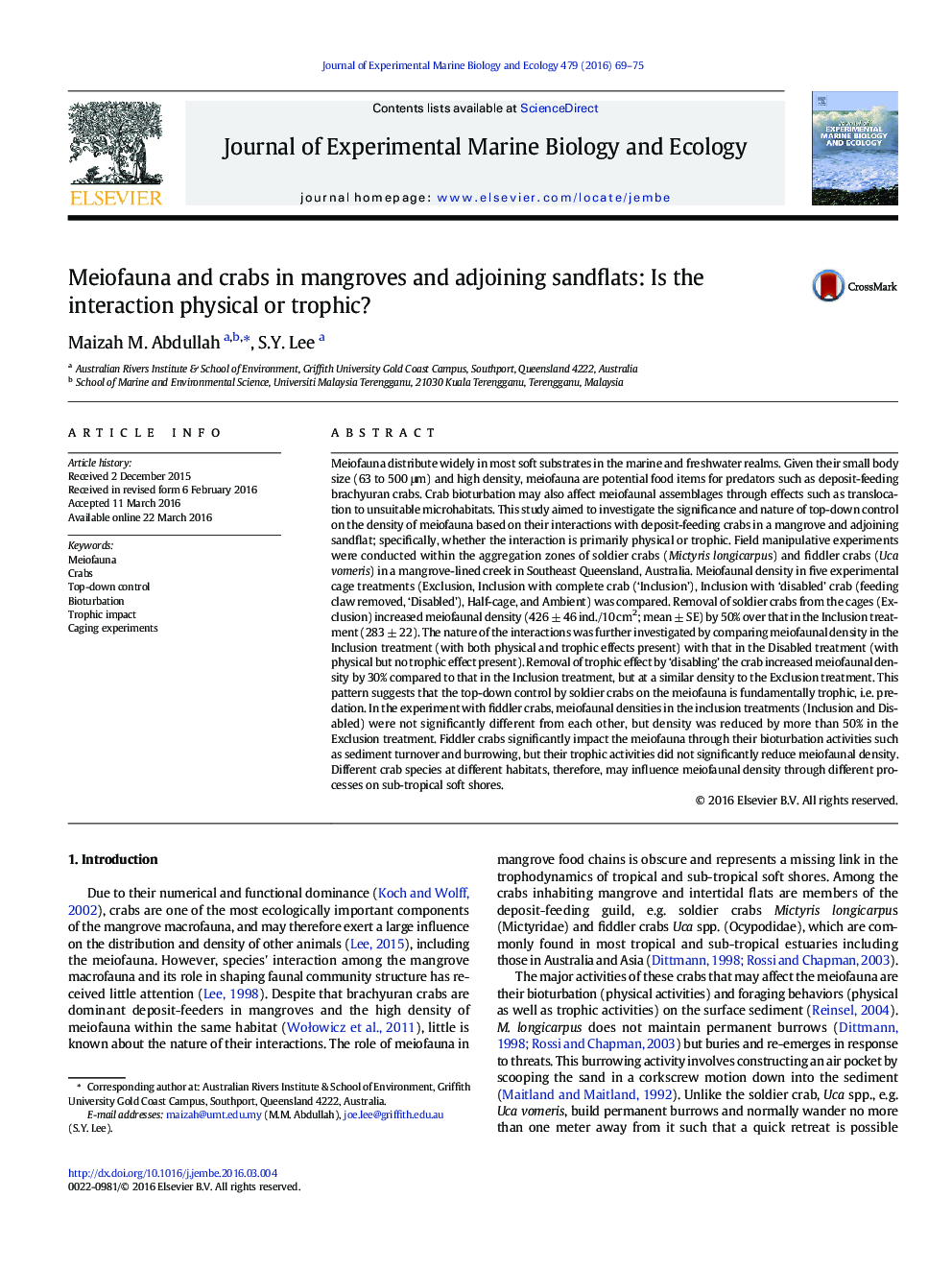| کد مقاله | کد نشریه | سال انتشار | مقاله انگلیسی | نسخه تمام متن |
|---|---|---|---|---|
| 4395265 | 1618396 | 2016 | 7 صفحه PDF | دانلود رایگان |
• Manipulation of crab's feeding activities discriminates physical and trophic effects.
• Sediment characteristics may influence the outcome of the physical interaction.
• Top-down control by soldier crabs on the meiofauna is fundamentally trophic.
• Fiddler crabs significantly impact the meiofauna through their physical activities.
• Meiofaunal density recovered faster in the sandier habitat.
Meiofauna distribute widely in most soft substrates in the marine and freshwater realms. Given their small body size (63 to 500 μm) and high density, meiofauna are potential food items for predators such as deposit-feeding brachyuran crabs. Crab bioturbation may also affect meiofaunal assemblages through effects such as translocation to unsuitable microhabitats. This study aimed to investigate the significance and nature of top-down control on the density of meiofauna based on their interactions with deposit-feeding crabs in a mangrove and adjoining sandflat; specifically, whether the interaction is primarily physical or trophic. Field manipulative experiments were conducted within the aggregation zones of soldier crabs (Mictyris longicarpus) and fiddler crabs (Uca vomeris) in a mangrove-lined creek in Southeast Queensland, Australia. Meiofaunal density in five experimental cage treatments (Exclusion, Inclusion with complete crab (‘Inclusion’), Inclusion with ‘disabled’ crab (feeding claw removed, ‘Disabled’), Half-cage, and Ambient) was compared. Removal of soldier crabs from the cages (Exclusion) increased meiofaunal density (426 ± 46 ind./10 cm2; mean ± SE) by 50% over that in the Inclusion treatment (283 ± 22). The nature of the interactions was further investigated by comparing meiofaunal density in the Inclusion treatment (with both physical and trophic effects present) with that in the Disabled treatment (with physical but no trophic effect present). Removal of trophic effect by ‘disabling’ the crab increased meiofaunal density by 30% compared to that in the Inclusion treatment, but at a similar density to the Exclusion treatment. This pattern suggests that the top-down control by soldier crabs on the meiofauna is fundamentally trophic, i.e. predation. In the experiment with fiddler crabs, meiofaunal densities in the inclusion treatments (Inclusion and Disabled) were not significantly different from each other, but density was reduced by more than 50% in the Exclusion treatment. Fiddler crabs significantly impact the meiofauna through their bioturbation activities such as sediment turnover and burrowing, but their trophic activities did not significantly reduce meiofaunal density. Different crab species at different habitats, therefore, may influence meiofaunal density through different processes on sub-tropical soft shores.
Journal: Journal of Experimental Marine Biology and Ecology - Volume 479, June 2016, Pages 69–75
